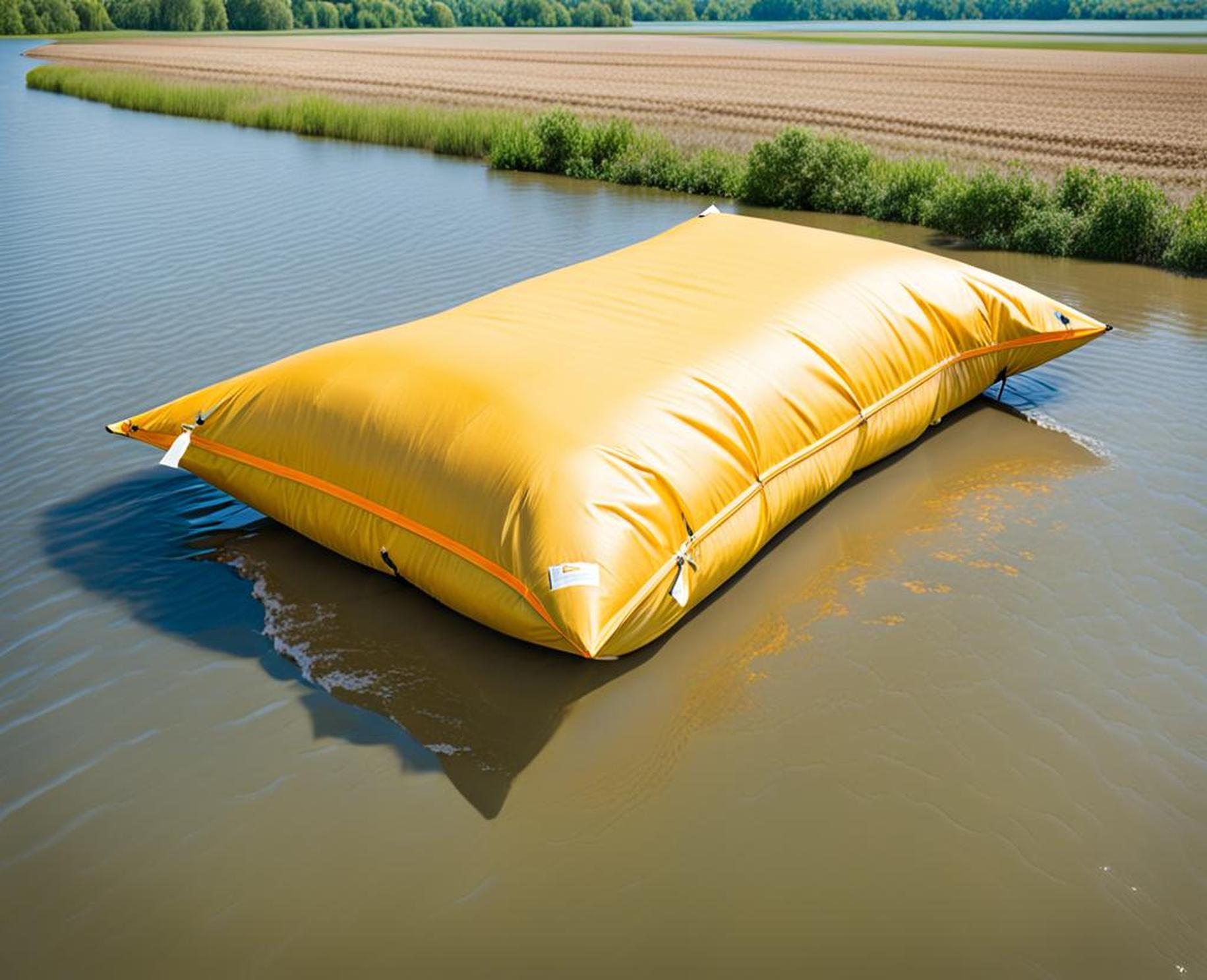Flooding can cause catastrophic damage to homes and businesses if floodwaters are not contained. For many years, sandbags have been the go-to solution for temporary flood barriers. However, traditional sandbags have some significant downsides – they are extremely heavy, single-use, and require significant manpower to deploy effectively. Thankfully, several innovative new technologies provide flood protection that improves upon sandbags in every way. Let’s explore some of the shortcomings of sandbags and the better lightweight options available today.
Problems With Traditional Sandbags
Sandbags have been used for flood control for over 200 years, but they come with many logistical challenges that make them less than ideal in many situations.
Heavy and Labor-Intensive
Filled sandbags typically weigh over 40 pounds each, requiring significant strength to lift and move into place. Building an effective sandbag wall or barrier demands tremendous manpower over extended periods. The elderly, those with disabilities, or single homeowners may simply not be able to handle the physical demands of sandbagging their property.
Not Environmentally Sustainable
Sandbags are designed for one-time use. After a flood, thousands of saturated sandbags end up in local landfills. The plastic also degrades over time, releasing microplastics into the environment. Extracting the sand can damage river ecosystems and overload available supplies during flood emergencies.

Logistical Challenges
Protecting property requires having enough empty sandbags, sand, and manpower ready before a potential flood hits. Storage space is needed to stockpile these materials. When floods threaten, sandbagging requires non-stop work to fill, move, and stack bags before waters rise. Many at-risk properties simply do not have the resources or ability to utilize sandbags effectively.
Modern Alternatives to Sandbags
New types of flood barriers address these sandbag challenges by being lightweight, easy to deploy, reusable, and eco-friendly. Here are some of the most innovative solutions available:
Metal Flood Barriers
Interlocking lightweight aluminum or steel panels can be quickly bolted together to form tall temporary floodwalls. These barriers take less than an hour to erect and provide protection against shallow water intrusion. While not suitable for extreme flooding, they are an affordable option for lower-risk residential and commercial locations.
Aqua Sacks
Aqua sacks provide sandbag-like blocking ability in a lighter, reusable form. These durable sacks contain a super-absorbent polymer compound that expands when saturated with water. Weighing much less than sandbags, Aqua sacks are easier to stack and reposition as needed. Their only drawback is a longer drying time after use, but undamaged sacks can serve duty through many floods.
Water-Filled Cofferdams
For protection against extreme riverine or coastal flooding, water-filled cofferdams are the gold standard. These inflatable barriers are made of ultra-strong tubing or bladders that create flexible temporary dams when filled with water from any source. Cofferdams can stretch over 500 feet and withstand massive hydraulic pressure. Though requiring specialized equipment to deploy, they provide unmatched flood protection.
Key Factors To Compare Solutions
When evaluating flood protection options, there are several key factors to consider:
- Weight and portability of deflated system
- Flood protection height and level of hydraulic pressure resistance
- Speed of deployment and manpower required
- Environmental sustainability and reusability
- Storage space needed
- Upfront costs versus long-term value
The optimal solution depends on site-specific risks and resources. Property evaluated as lower risk may benefit most from lightweight metal barriers, while critical infrastructure will require the utmost protection of water-filled cofferdams.
When To Use Each Type of Flood Barrier
Metal Barriers – Low-Risk Residential
Metal flood panels are ideal for homes and garages, protecting doorways, windows, and driveway entrances from shallow water damage. Their low storage profile makes these barriers a practical solution for homeowners without large flood risks.
Aqua Sacks – Low-Risk Commercial
Businesses and office buildings can benefit from the easy deployment of Aqua sacks. While not suitable for severe flooding, their stackable and absorbent nature helps secure vulnerable entry points from water intrusion and vandalism when flooding is expected.
Cofferdams – High-Risk and Severe Flooding
Inflatable cofferdams provide the strongest and most flexible protection when extreme floods threaten to overwhelm levees and seawalls. Their unmatched height and strength secure cities, infrastructure, and high-value coastal regions from catastrophic damage. Despite higher costs, their unparalleled effectiveness makes cofferdams an essential tool for the highest-risk areas.
Sandbags may still have a place for small-scale water diversion, but their limitations are clear. New flood barrier technologies improve upon sandbags in every way: faster deployment, reusable materials, and superior performance. Evaluating your specific risks and resources will determine which solution fits best. But moving beyond sandbags is a wise investment in safeguarding lives and property from flood damage.
